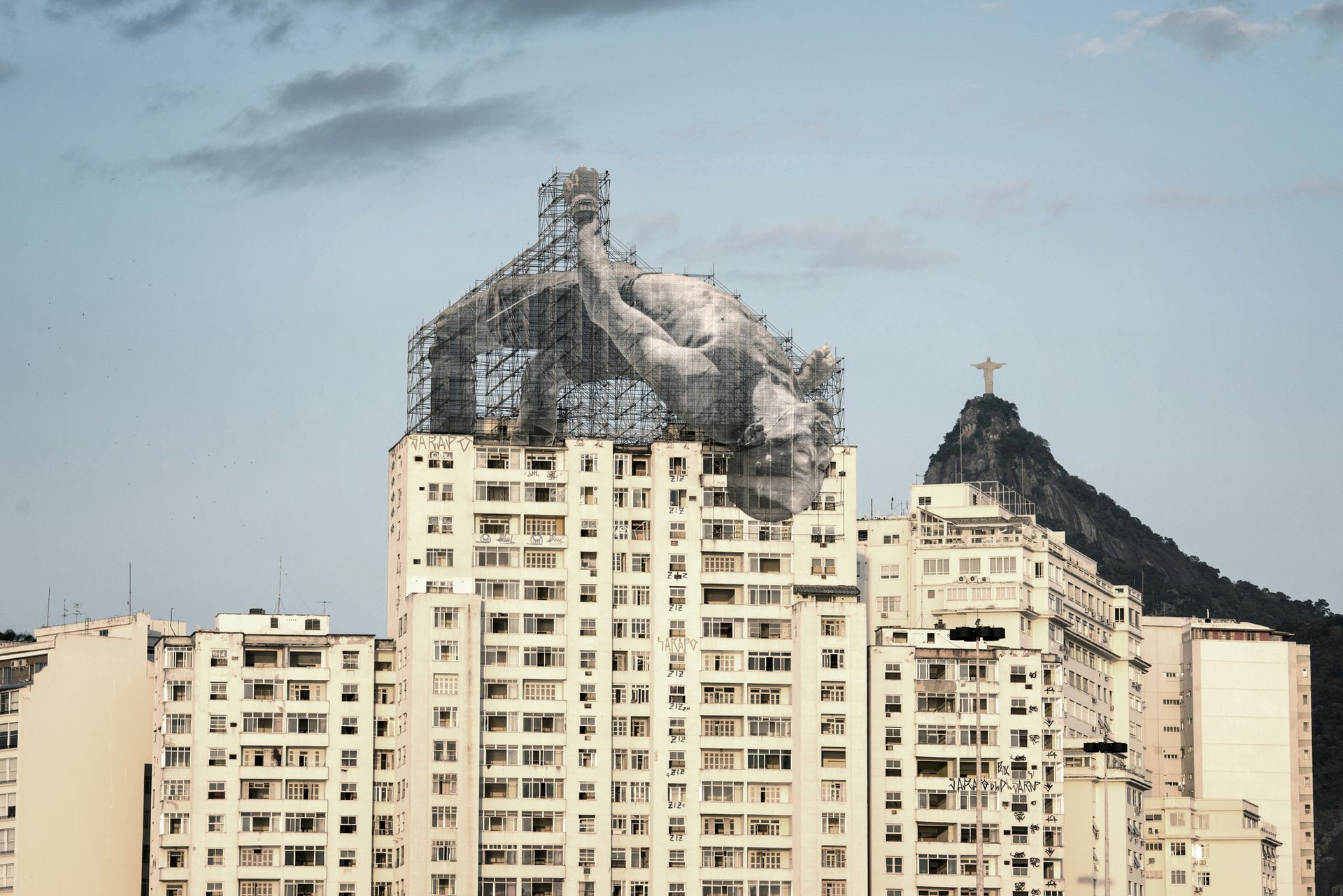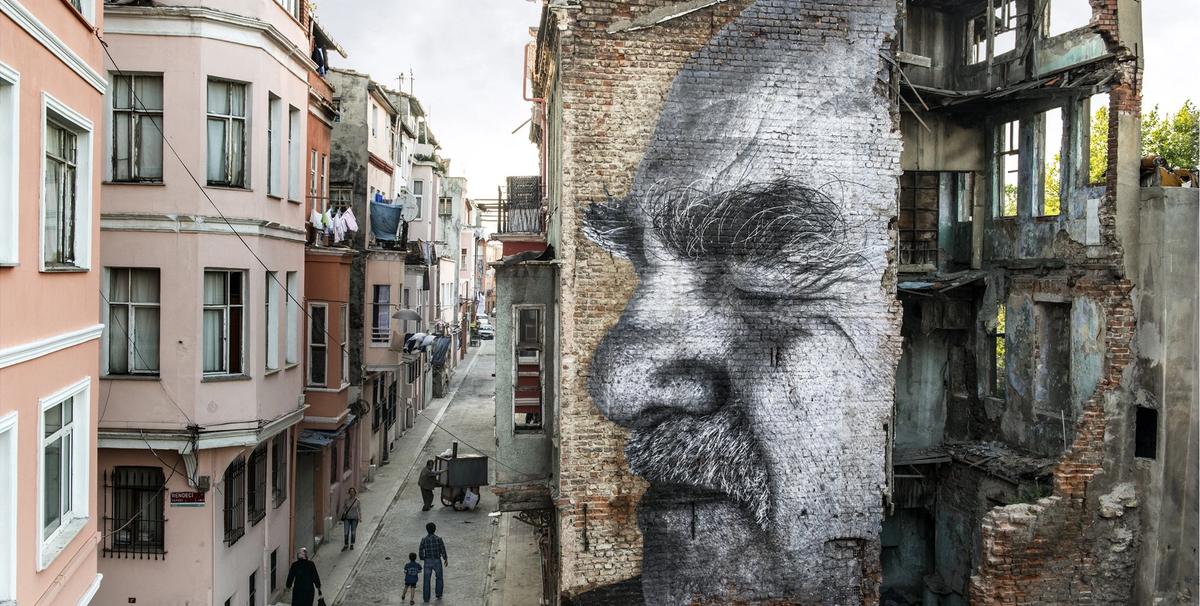The French artist JR, best-known for his giant art works on city walls, gets his first major retrospective in the Middle East with an exhibition opening at QM Gallery Katara in Doha next month (9 March-31 May 2017).
The show will feature video and photographic documentation of JR’s most famous public works such as Women Are Heroes (2008), for which he pasted portraits of women from conflict zones on to street walls; Rio de Janeiro Olympic Games (2016), where the artist created giant installations of Olympic athletes leaping over buildings and diving into the sea; and The Louvre, Paris (2016), for which he covered one of the glass sides of the Louvre's pyramid with a photograph, giving the illusion that it had temporarily disappeared.
Qatar Museums, the body behind QM Gallery Katara, has commissioned work in public spaces in Qatar before, including graffiti art featuring Arabic calligraphy on the motorway tunnels in Doha by the Tunisian artist eL Seed, and Richard Serra’s steel installation East-West/West-East in the Qatari desert. Whether JR will create a new commission in Doha is up in the air. “This is a possibility. We will see once [we’re] there. I would love to do that,” he says.
JR's exhibition in Doha is not his first appearance in the Middle East. In 2006-07 he created Face2Face in Israel and Palestine, which he describes as “the largest illegal art project”. The work took place in eight cities on both sides of the separation barrier and involved enormous black-and-white portraits of Palestinians and Israelis who shared the same profession, including taxi drivers, teachers, musicians, and petrol-pump attendants. The portraits also included a “holy triptych” featuring the faces of an imam, a priest and a rabbi side by side on the barrier in Bethlehem. “It was quite an unforgettable adventure,” JR says. After the Tunisian revolution in 2011, JR also worked with local artists there on the project Artocracy, which replaced photos of dictators with portraits of Tunisian citizens.

“I see that the Gulf art scene is rising and that Qatar is becoming a big destination for international contemporary art. Generally speaking, for local public art to develop, you need freedom of expression," he says. "Visual artists, writers, actors and poets must be protected.”


